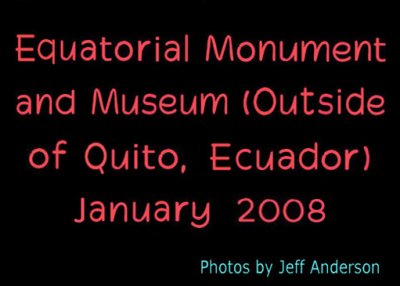
Equatorial Monument and Museum cover page. |
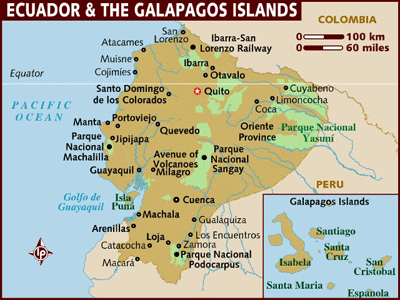
Map of Ecuador with the star indicating Quito. |
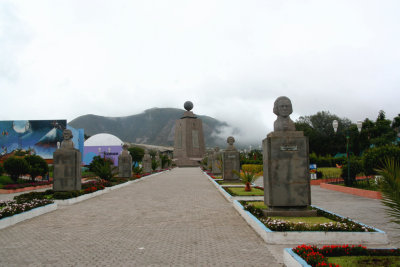
The Equatorial (Middle of the World) Monument, which was built in 1938 by French scientists to prove Newton's theories. |

The location was wrong, because, without GPS, they missed the center point on earth. |
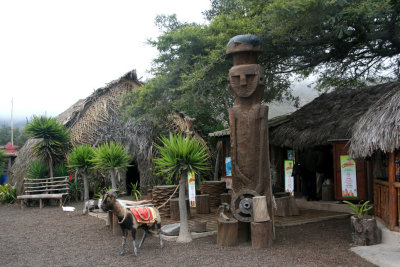
Entrance to the Equatorial Museum with an Indian statue in the background. |
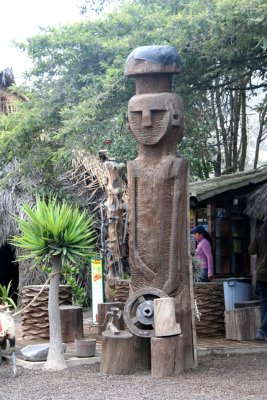
Close-up of the carved wooden statue by the indigenous (Quicha) people. |

Statue of statue of (an aroused) Indian warrior the Equatorial Museum. |

Another Indian warrior at the museum. |
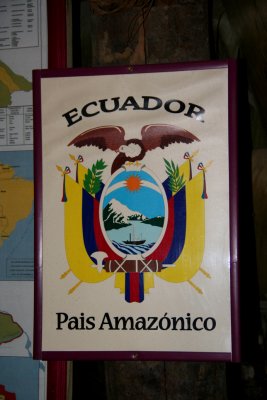
A sign stating that Ecuador is an Amazonian country. |
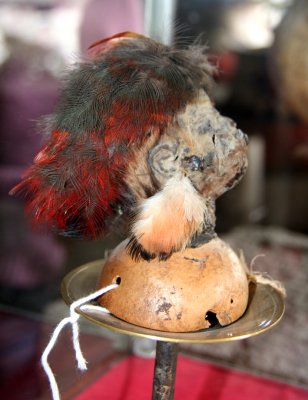
An authentic shrunken head at the Equatorial Museum. |
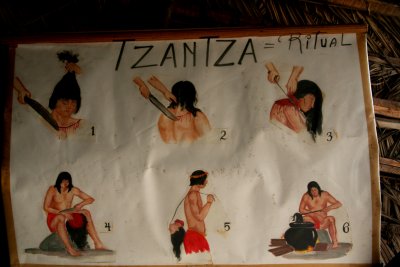
Sign displaying the steps of Izaniza, which is the ritual for shrinking heads. |

A traditional house of mud, clay and straw, which is more earthquake proof because the materials are flexible. |
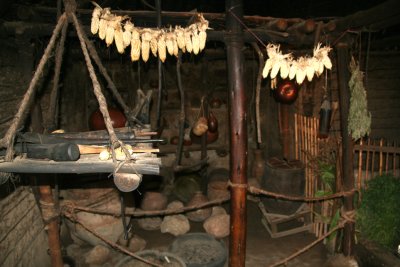
Interior of the traditional Ecuadorian house. |
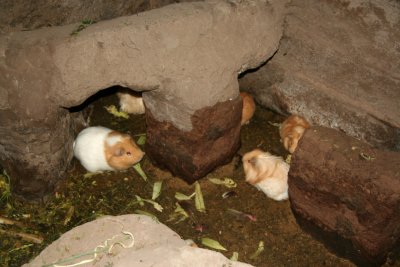
My guide said that guinea pigs were used to predict earthquakes since they sense them and squeak before they occur. |

Picture of Rita Caiza who lived in the traditional Ecuadorian house. It is claimed that she lived to the age of 115. |
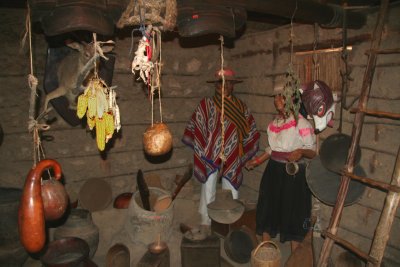
Interior of another traditional house at the Equatorial Museum where a family of 12 lived. |
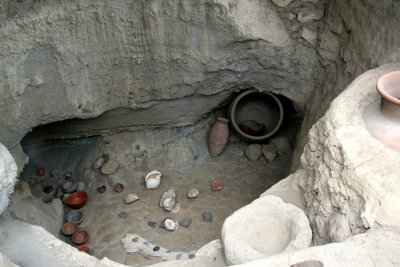
This is a tomb of the indigenous Quicha people. |

People were buried in a fetal position in pots like this. |

A happy-looking face at the Equatorial Museum. |

A Quicha wooden carving on display at the museum. |
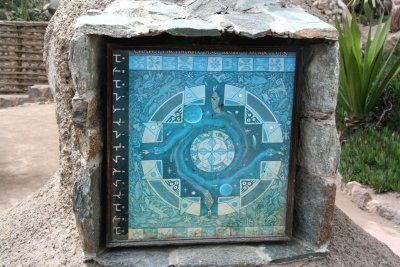
An astrological-looking monument. |

Totem pole where the eagle's beak points to the Cayambe Volcano located in the Ecuadorian Andes. |

Another totem pole of the on display at the Equatorial Museum. |
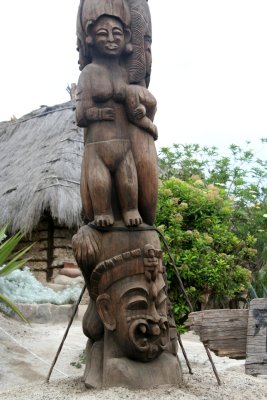
Close-up of the lower portion of the totem pole. |
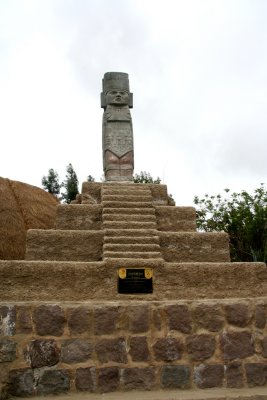
A carved wooden sculpture representing the Tolteca culture who were inhabitants of this area in 9,000 BC. |

Close-up of the sculpture. |
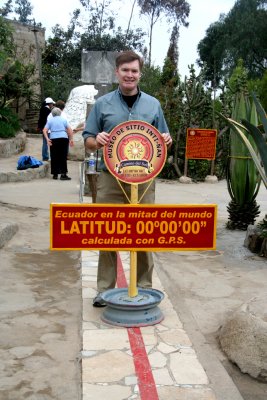
I am standing at the true center of the earth (proved by GPS) at the Equatorial Museum. |

First demonstration at 0 latitude and 0 longitude - when water is poured into a sink, it goes straight down without spinning. |

2nd demonstration at 0 latitude and 0 longitude - it is easier to balance an egg on the head of a nail. That's me, by the way. |
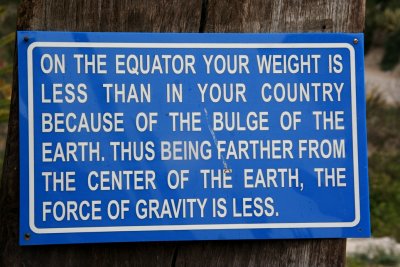
After I read this, I ordered an extra dessert after lunch! |











